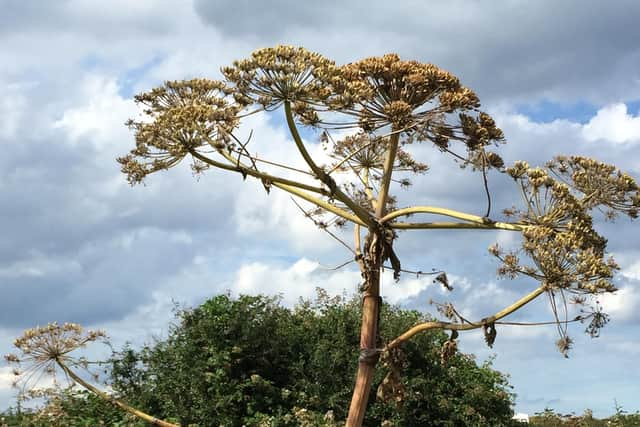Wigan youngsters urged to 'stay away' from toxic giant hogweed during summer holiday
and live on Freeview channel 276
Giant hogweed’s sap is extremely toxic to the skin in sunlight and cases are often reported in the summer holidays.
Coming into contact with any part of the non-native weed, followed by exposure to sunlight, can cause severe discomfort and blistering to the skin.
Advertisement
Hide AdAdvertisement
Hide Ad

Dr Peter Fitzsimons, technical manager of the Property Care Association’s invasive weed control group, said: “Each year we hear of people who are injured by giant hogweed and quite often it is children who encounter it while out playing in the summer holidays.
“Our advice is to stay away from this plant and not allow its toxic sap to come into contact with skin in the sunlight.
“The sap can also be transferred via touch, so it can possibly affect somebody else through clothing and footwear.
“Symptoms include a rash, itching and blisters where skin comes into contact with it.
Advertisement
Hide AdAdvertisement
Hide Ad

“In some cases, the blistering can be so severe that urgent medical attention is required.
“The situation is made particularly serious as this can become a long-term condition, an allergic response called ‘sensitisation,’ which can recur over a period of years, with the rash and the itching coming back every time the skin is exposed to sunlight.
“Where exposure has occurred to the skin, we recommend washing the affected area, covering it up and seeking medical advice immediately.”
Capable of reaching five metres tall, giant hogweed has a large, white, umbrella-shaped flowering head, its leaves are sharply serrated or divided, while the stem is covered in bristles and has blotchy purple markings.
